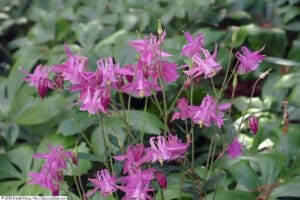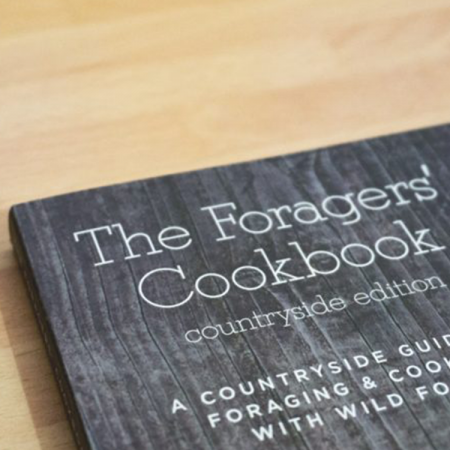Columbine / Spring / Summer / Edible
Columbine is a common and distinctive garden plant, and is often seen escaping from gardens and springing up in long grass and verges nearby. Its tall, elegantly curved stems grow up to a metre tall, supporting multi-coloured flowers and later rattling seed pods. It is an adaptable and hardy plant, native to Europe and selectively bred by gardeners into a myriad colours and elaborate shapes. The flowers are edible and mild tasting.
Common Names
Aquilegia, grannys bonnets
Botanical Name
Aquilegia vulgaris
Scientific Classification
Kingdom – Plantae
Order – Ranunculales
Family – Ranunculaceae
Physical Characteristics for Columbine
Leaves and stem
The plant grows in clumps of several tall thin stems, which curve like a shepherds crook to bear buds and flowers. The leaves are smooth, mid-to light green, and rounded and lobed, typically in three sections.
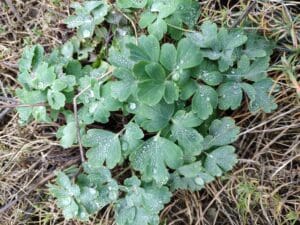
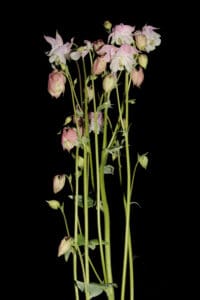
Flowers
The flowers can be incredibly varied, which can make identification tricky at first – look for the arched stem and the prominent hooked spurs on the back of the petals first and foremost. They come in all kinds of colours, most often purples, lilacs, pinks and whites but some specialist cultivars show reds, yellows and nearly black. The simple shape has five rounded petals inside five more pointed ones that have a prominent hooked spur on the back. You might also see double or even triple stacked varieties that look like a ruffles Victorian skirt – again, the typical traits for aquilegia are the hooked spurs on the back and the arched drooping stem.
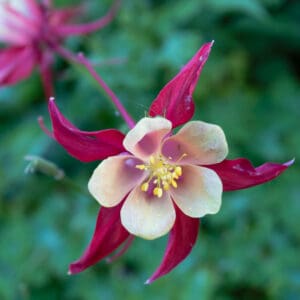
Seeds
As the seed pods form , the stems straighten out and start to point upwards (unlike the drooping flowers). The pods are ong, thin, and curvedm a bit like a tiny thin bean pod. They cluster together in a group of 5 if the flower was simple with 5-fold symmetry, but more if it was a ruffled variety. They look a bit like a crown or maybe a jesters hat! As they dry out the shiny black seeds inside start to rattle, then shake out when they are ripe.
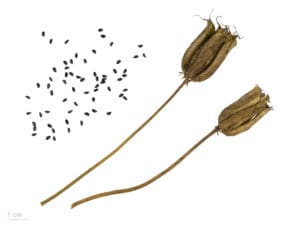
Habitat
Well drained situations with plenty of sun and no mowing. Gardens and roadside verges near houses
Known Hazards
The leaves are toxic unless boiled, and seeds are also toxic. We recommend to just stick to eating the flowers.
Columbine Could be Confused with
Other related aquilegias, and members of the Ranunculaceae family such as buttercups. Many of these are toxic, so caution is advised
Edible Uses for Columbine
The flowers are edible, though not particularly strong tasting.
They make a good addition to salads, and are very decorative on cakes and desserts, or as a cocktail garnish
Extra notes from the Foragers
The name aquilegia comes from the Latin Aquila, meaning eagle. It refers to the hook shaped spurs on the back of the petals, which look like eagles claws. And in medieval times, it was believed to possess magical properties, warding off evil spirits and bringing good fortune to those who cultivated it.
Columbine is a favourite host plant for green aphids, and therefore also the ladybirds that eat them





